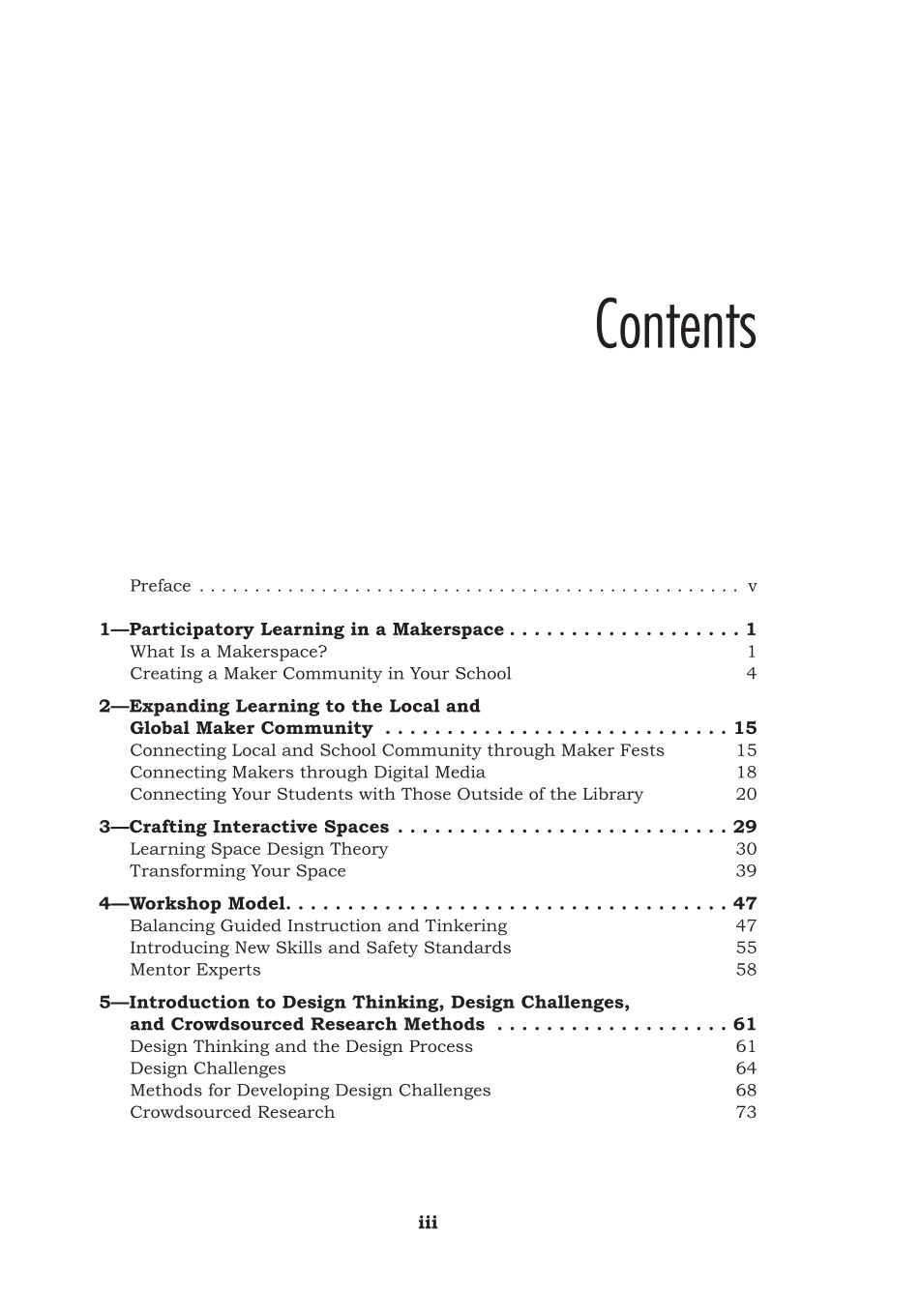iii
Contents
Preface. . . . . . . . . . . . . . . . . . . . . . . . . . . . . . . . . . . . . . . . . . . . . . . . . . v
1—Participatory Learning in a Makerspace . . . . . . . . . . . . . . . . . . . 1
What Is a Makerspace? 1
Creating a Maker Community in Your School 4
2—Expanding Learning to the Local and
Global Maker Community. . . . . . . . . . . . . . . . . . . . . . . . . . . . . 15
Connecting Local and School Community through Maker Fests 15
Connecting Makers through Digital Media 18
Connecting Your Students with Those Outside of the Library 20
3—Crafting Interactive Spaces . . . . . . . . . . . . . . . . . . . . . . . . . . . . 29
Learning Space Design Theory 30
Transforming Your Space 39
4—Workshop Model. . . . . . . . . . . . . . . . . . . . . . . . . . . . . . . . . . . . . 47
Balancing Guided Instruction and Tinkering 47
Introducing New Skills and Safety Standards 55
Mentor Experts 58
5—Introduction to Design Thinking, Design Challenges,
and Crowdsourced Research Methods. . . . . . . . . . . . . . . . . . . . 61
Design Thinking and the Design Process 61
Design Challenges 64
Methods for Developing Design Challenges 68
Crowdsourced Research 73

















































































































































